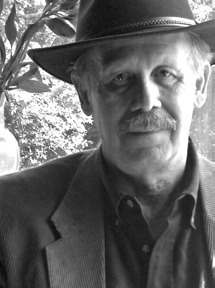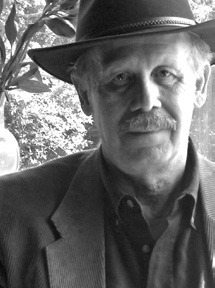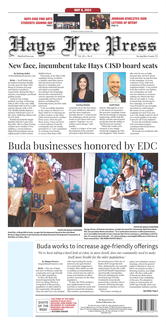(Last week Beal Sneed shot and killed the father of a childhood friend, who has run off with his wife. At his 1912 trial, a Fort Worth jury deadlocked seven to five in favor of acquittal forcing the judge to declare a mistrial.)
The Tarrant County district attorney wasted no time in announcing he would try Beal Sneed again for the murder of Albert Boyce, Sr. But the defendant’s father did not live long enough to see his son stand trial a second time.
Joe Sneed was standing on the sidewalk in front of the Georgetown post office sorting his mail on the morning of Mar. 6, 1912, when three gunshots rang out. Two .45-caliber bullets hit the rancher in the back killing him instantly.
As soon as he was certain Sneed was dead, R.O. Hilliard turned the smoking revolver on himself. A tenant farmer, who once worked for the wealthy cattleman, Hilliard had fought him over a piece of land but lost a bitter lawsuit.
In the killer’s pocket, the coroner found a note Hilliard wrote to his wife: “My mind has failed me. J.T. Sneed is the cause of it. I am going to take revenge this way and then go to the asylum.” At the last second, he evidently changed his mind about spending the rest of his life in a strait-jacket.
Although the authorities assured him Hilliard had acted entirely on his own with no aid nor encouragement from anybody else, Beal Sneed found his father’s slaying coming right after the Fort Worth trial just too much of a coincidence. In his paranoid state of mind, he could not help but believe the Boyces were somehow behind it.
Friends reminded Beal of Albert Jr.’s prowess with firearms, and a private detective hired to keep tabs on the surviving Boyce claimed he was lurking in the shadows ready to strike. His fear fueled by these reports, Beal decided one of them had to die.
Wearing a fake mustache and full beard, dressed in a farmer’s work clothes, Beal Sneed slipped unnoticed into Amarillo the last week of August 1912. He rented a cottage on Polk Street and patiently lay in wait for Albert Jr.
On Sep. 14, Beal finally spotted the man, he blamed for all his troubles, coming down the street. Albert Jr. rarely ventured out in public without one or more of his three brothers, but this day he was all alone. It was too good of a chance to pass up.
Beal Sneed charged out the door and with each stride closed the gap between him and his prey. Albert Boyce, Jr. sensed the approaching danger and reached for his ever-present pistol, but it was too late. Three blasts from a 12-gauge shotgun tore him apart.
In a replay of the events in Fort Worth eight months earlier, Beal calmly strolled to the county jail and turned himself in to the sheriff. His perp walk was witnessed by a 24-year-old grade-school teacher destined to take the art world by storm – Georgia O’Keefe.
Townspeople feared the worst, as members of the warring clans descended on Amarillo in the aftermath of Albert Jr.’s murder.
To their relief, the combined forces of the law managed to keep a tight lid on the powder keg until Beal posted bail and left town.
That November he was back in Fort Worth for the retrial in the killing of his latest victim’s father. The proceedings took four weeks but ended abruptly, when the jury voted on the first ballot to acquit Beal of the sensational crime.
The feudist was on a legal roll, and few expected a conviction at the February 1913 trial in the death of Albert Jr. Right they were, as Beal left the Vernon courthouse a free man and a hero to many.
When an out-of-state reporter asked the foreman how the jury could declare a confessed murderer innocent, he replied, “The best answer is because this is Texas. We believe in Texas that a man has the right and the obligation to safeguard the honor of his home even if he must kill the person responsible.”
That was the end of the so-called “Boyce-Sneed Feud.” Back together again after all the bloodshed, Beal and Lena moved to Paducah halfway between Plainview and Wichita Falls.
Beal Sneed finally saw the inside of a prison a decade later, when he was sentenced to a short stretch in Leavenworth for bribing a juror in a civil lawsuit. While he was behind bars, his son-in-law Wood Barton was shot to death by C.B.
Berry over a $28 debt.
Shortly after his release, Beal went looking for the man that made his daughter a widow. In March 1923, on Paducah’s main street, he shot Berry twice – once in the left arm and once in the right leg – inflicting only minor wounds. Four months later on the same street, Berry returned the favor doing considerably more, though not lethal, damage.
Ten days after his attempt on Beal’s life, a Seymour trial in the murder of Wood Barton ended in a “not guilty” verdict for Berry. Then in early 1924, two different juries two days apart in tiny Benjamin acquitted Beal and Berry of their shootings of each other.
Beal and Lena Sneed left Paducah, much to the relief of local residents, and relocated to Dallas.
Investments in the East Texas oil boom provided a comfortable living for the once notorious couple until Beal’s death in 1960 and Lena’s six years later.
“Texas Depression Era Desperadoes” delves into the early lives and criminal career of Bonnie and Clyde in addition to lesser known outlaws of the Thirties.
Order your copy by mailing a check for $24.00 to Bartee Haile, P.O. Box 130011, Spring, TX 77393.







